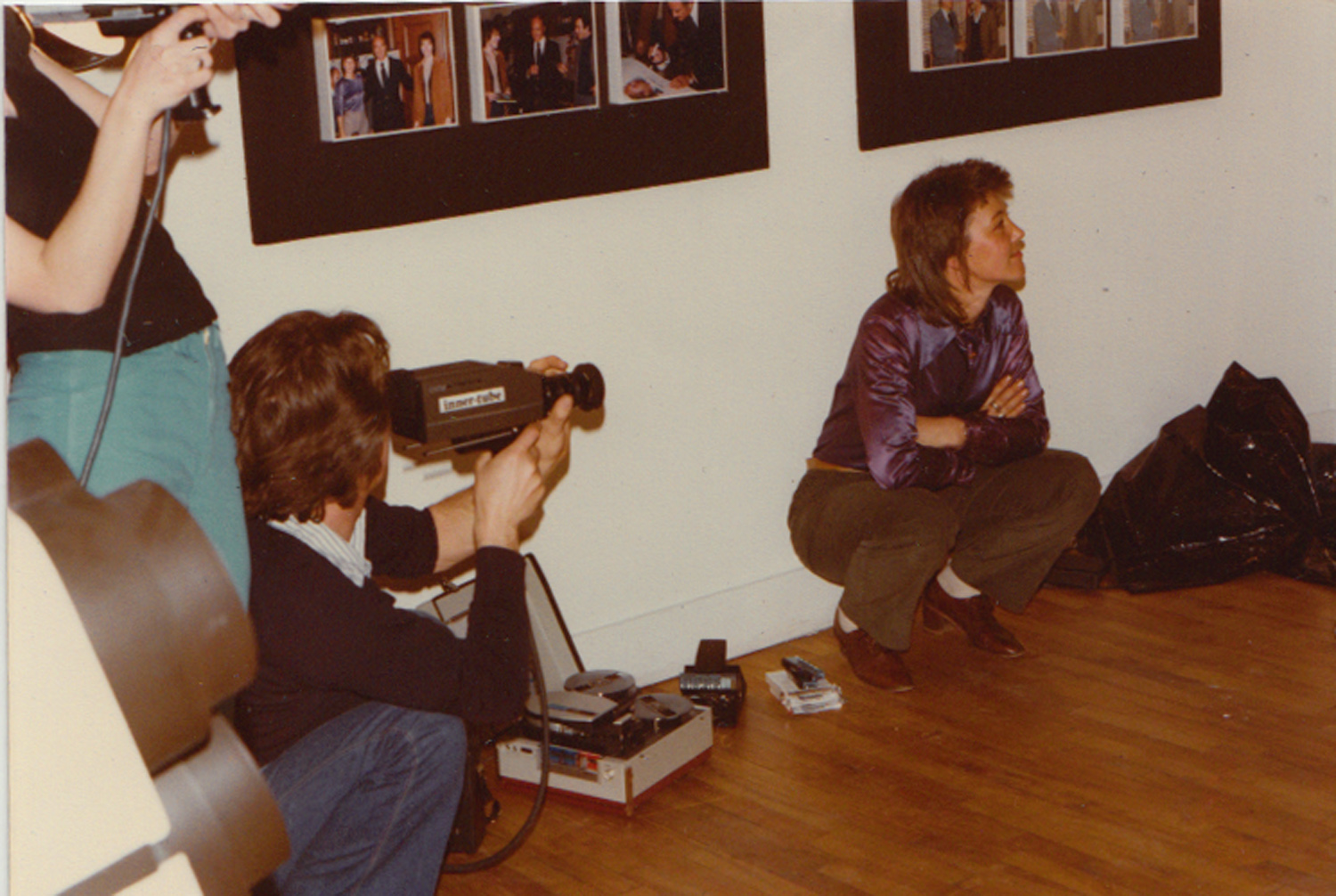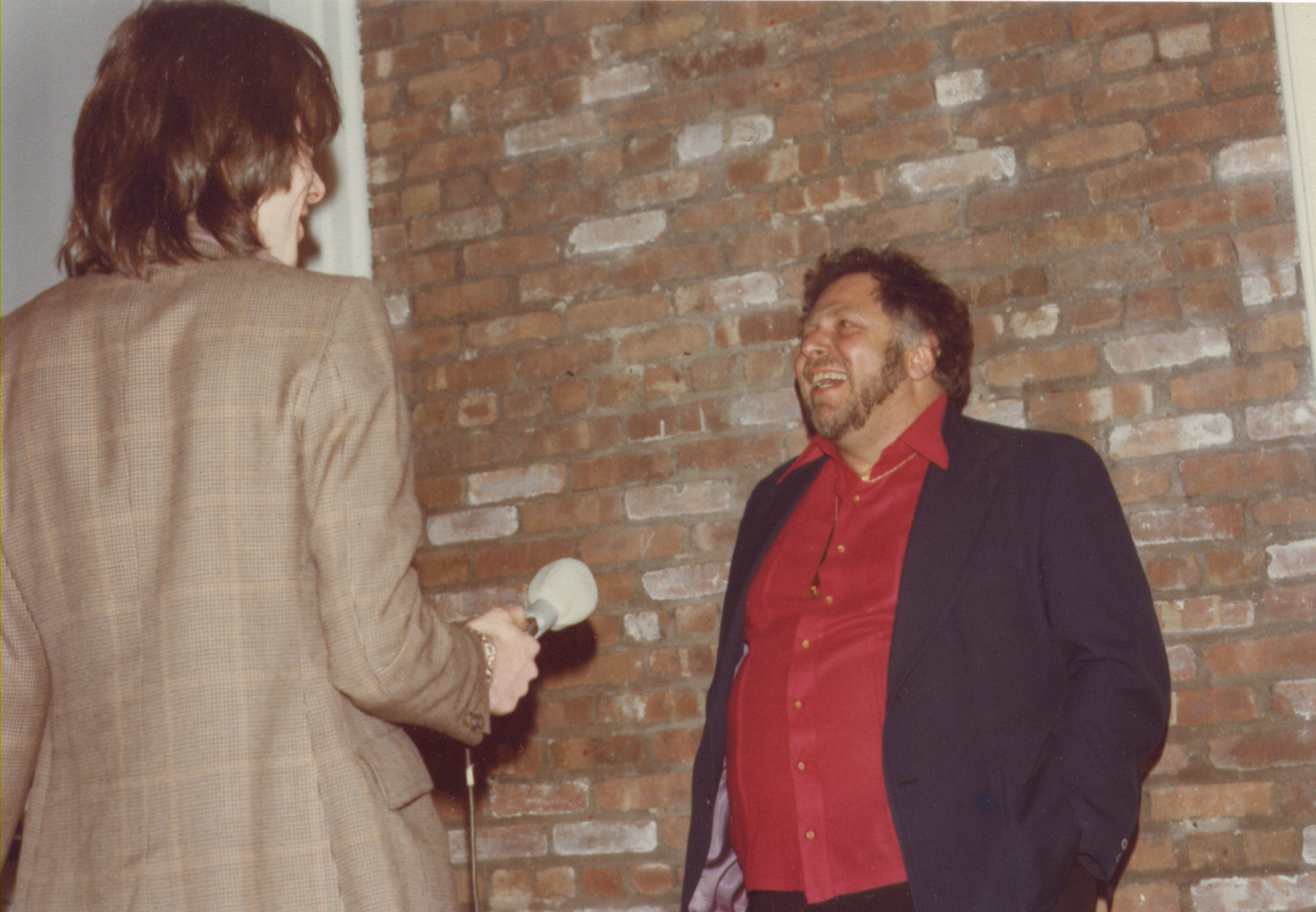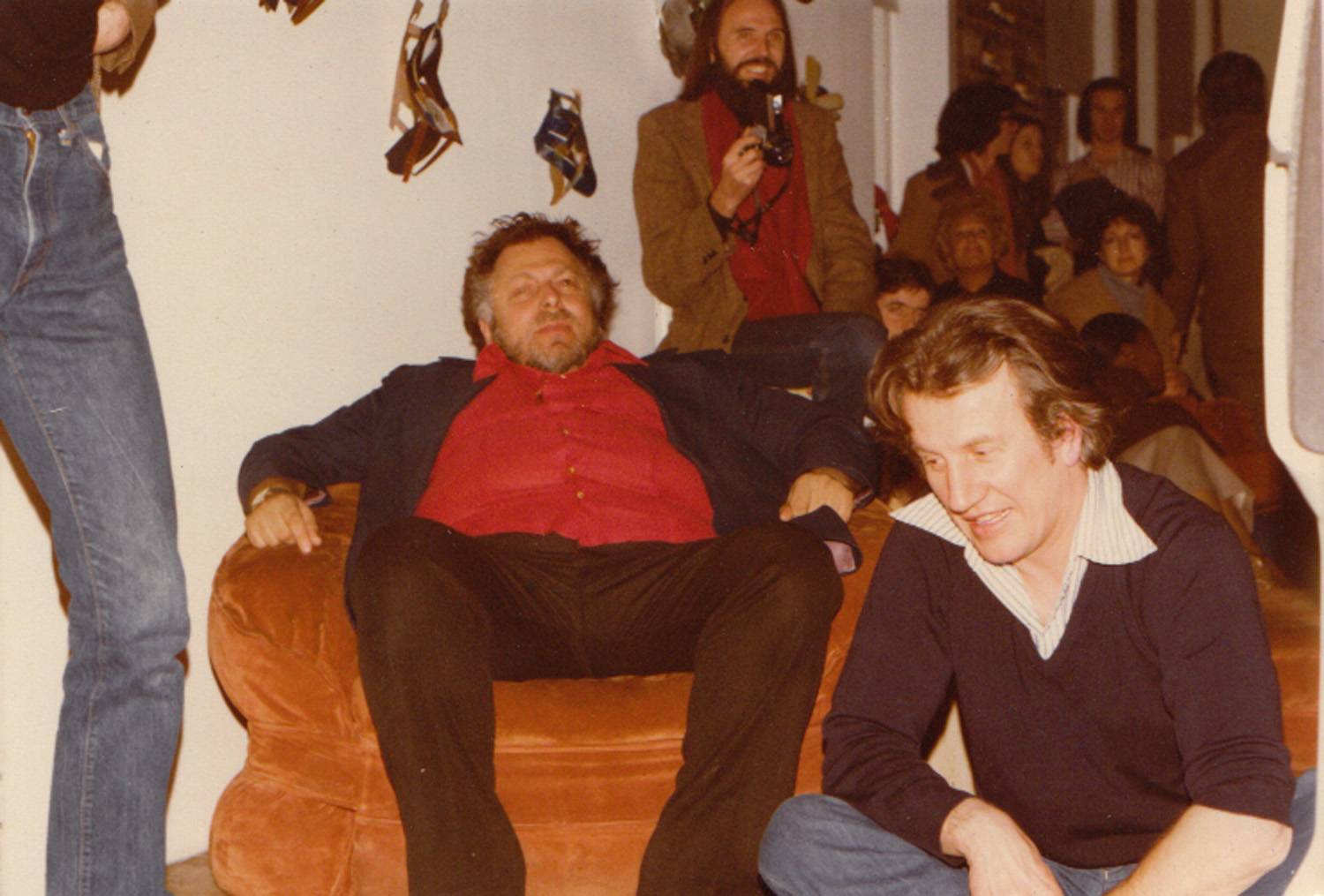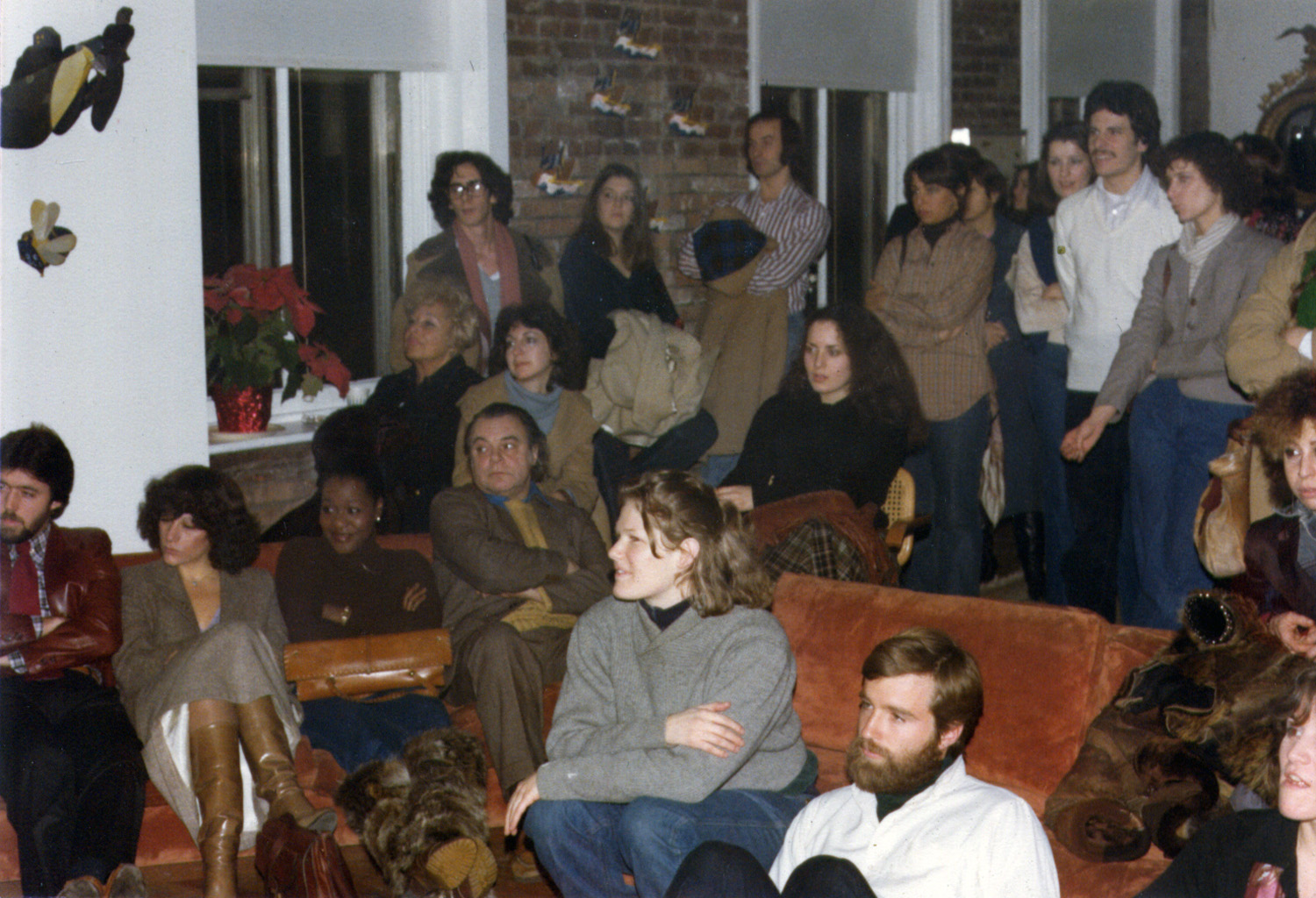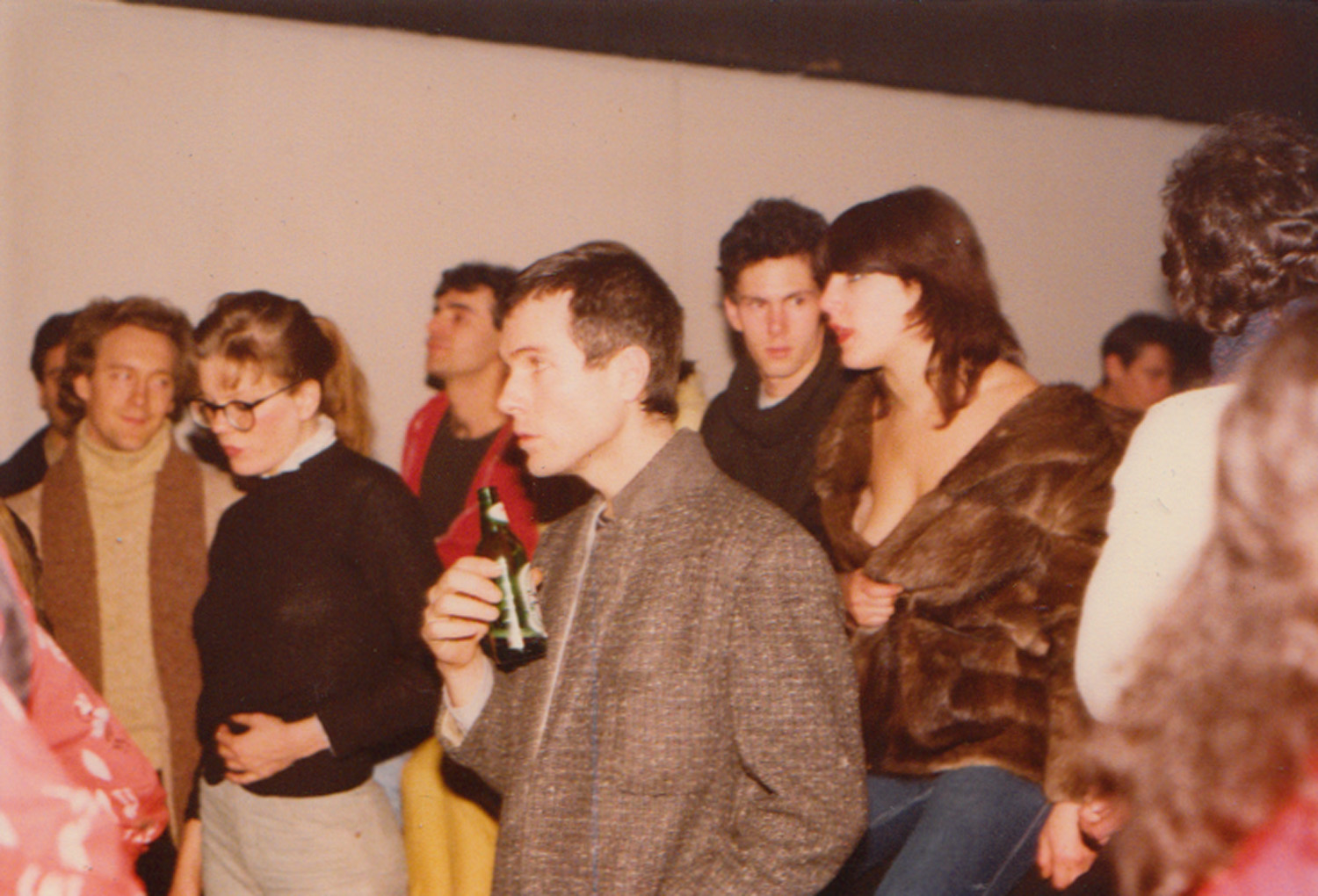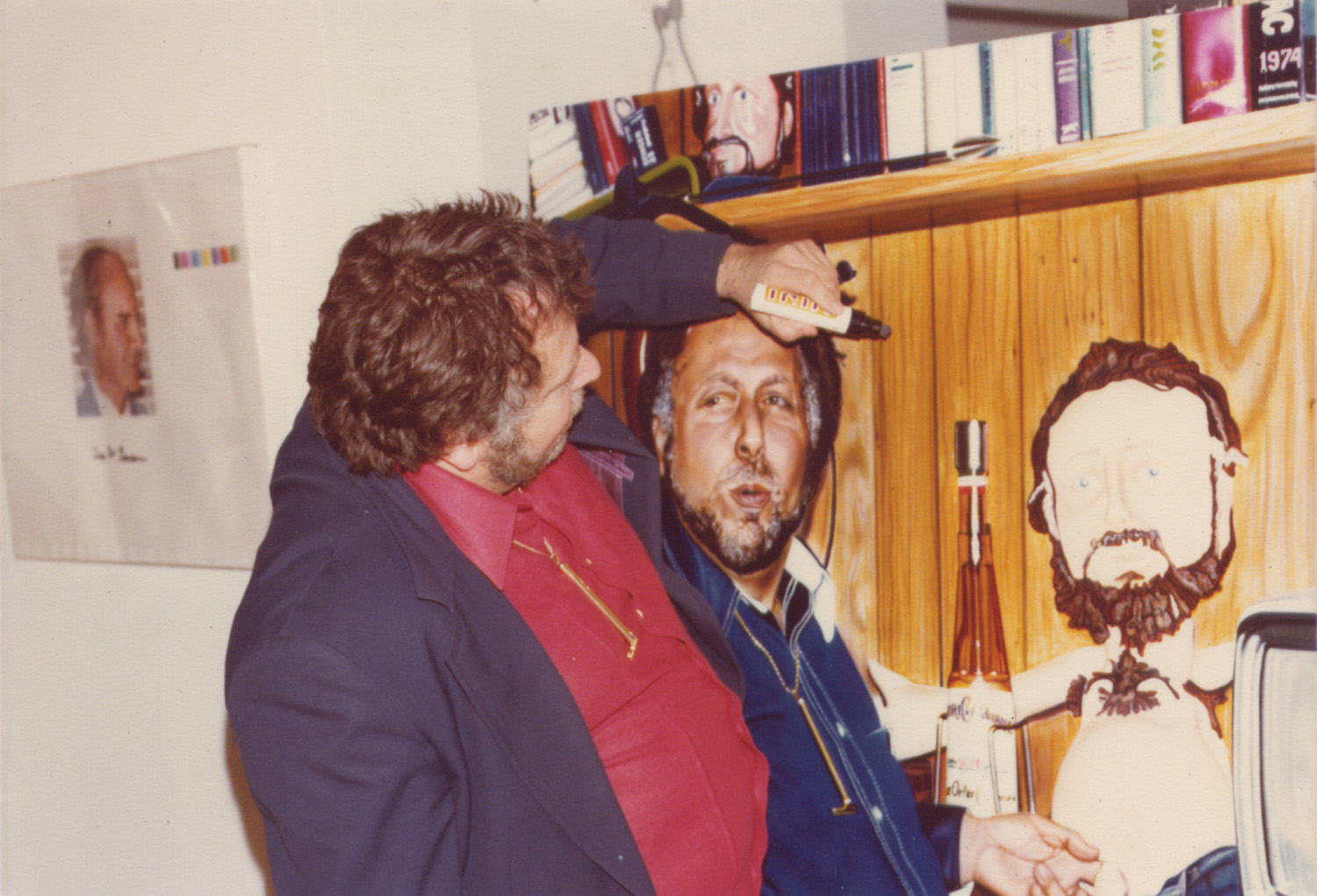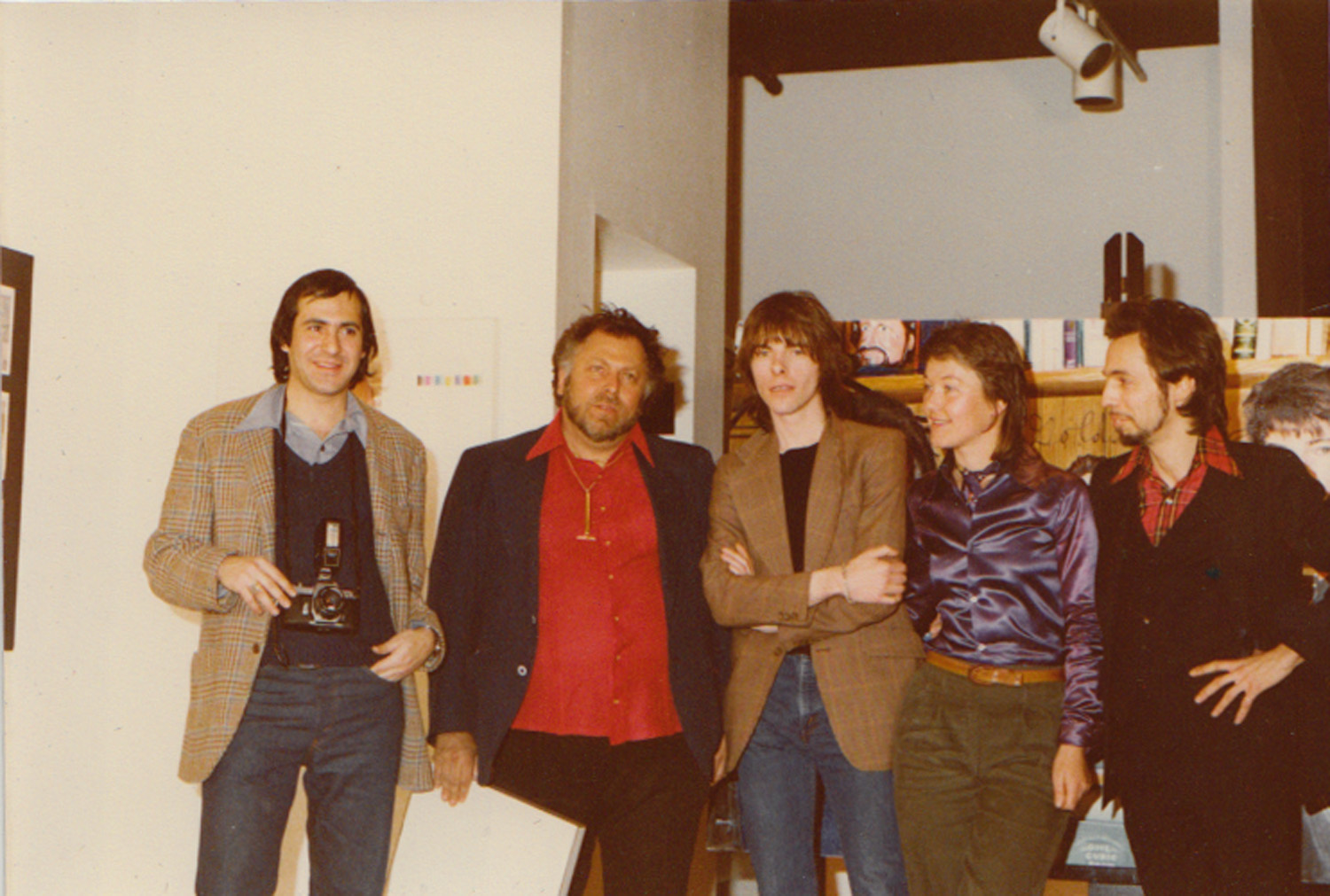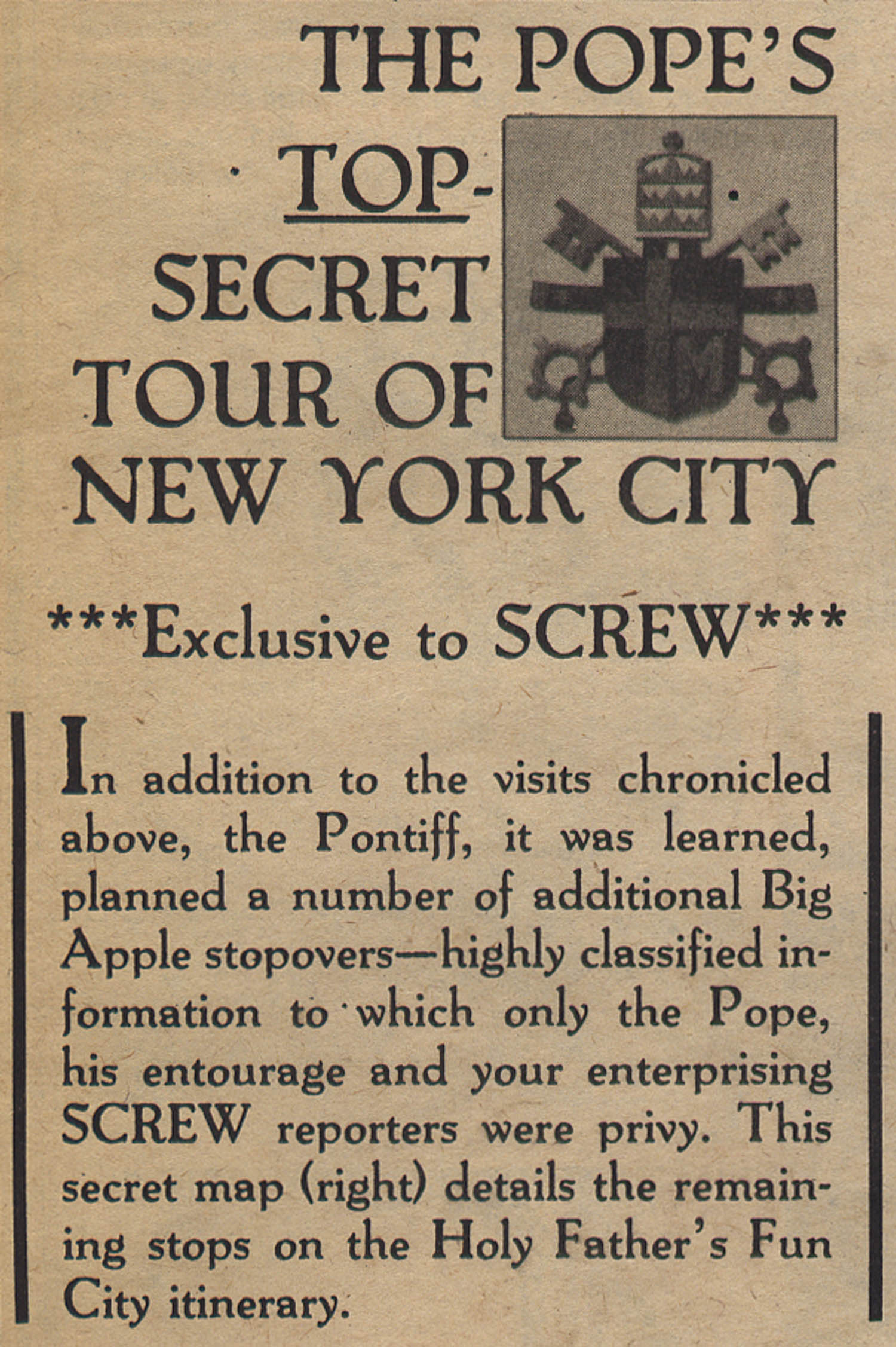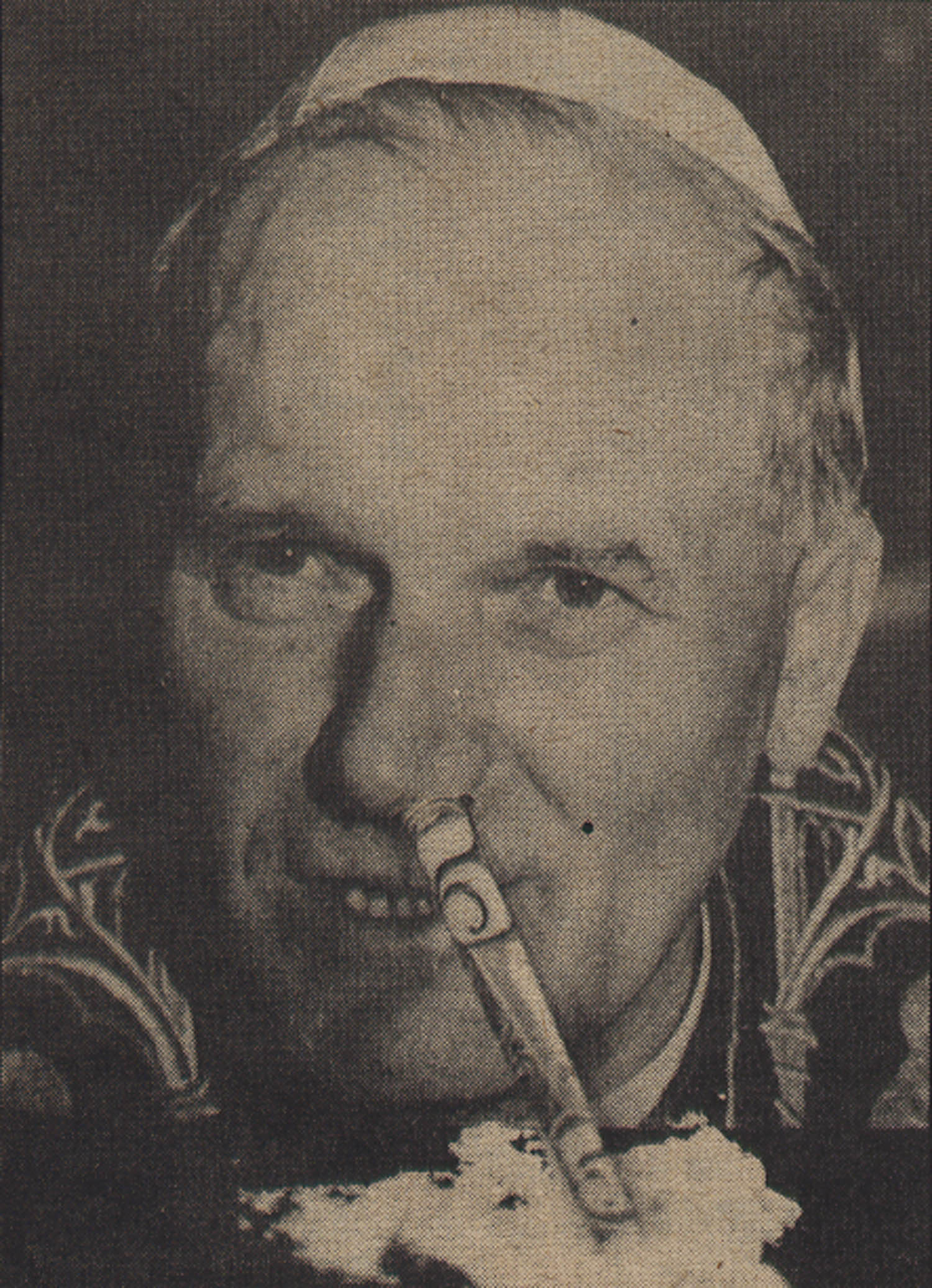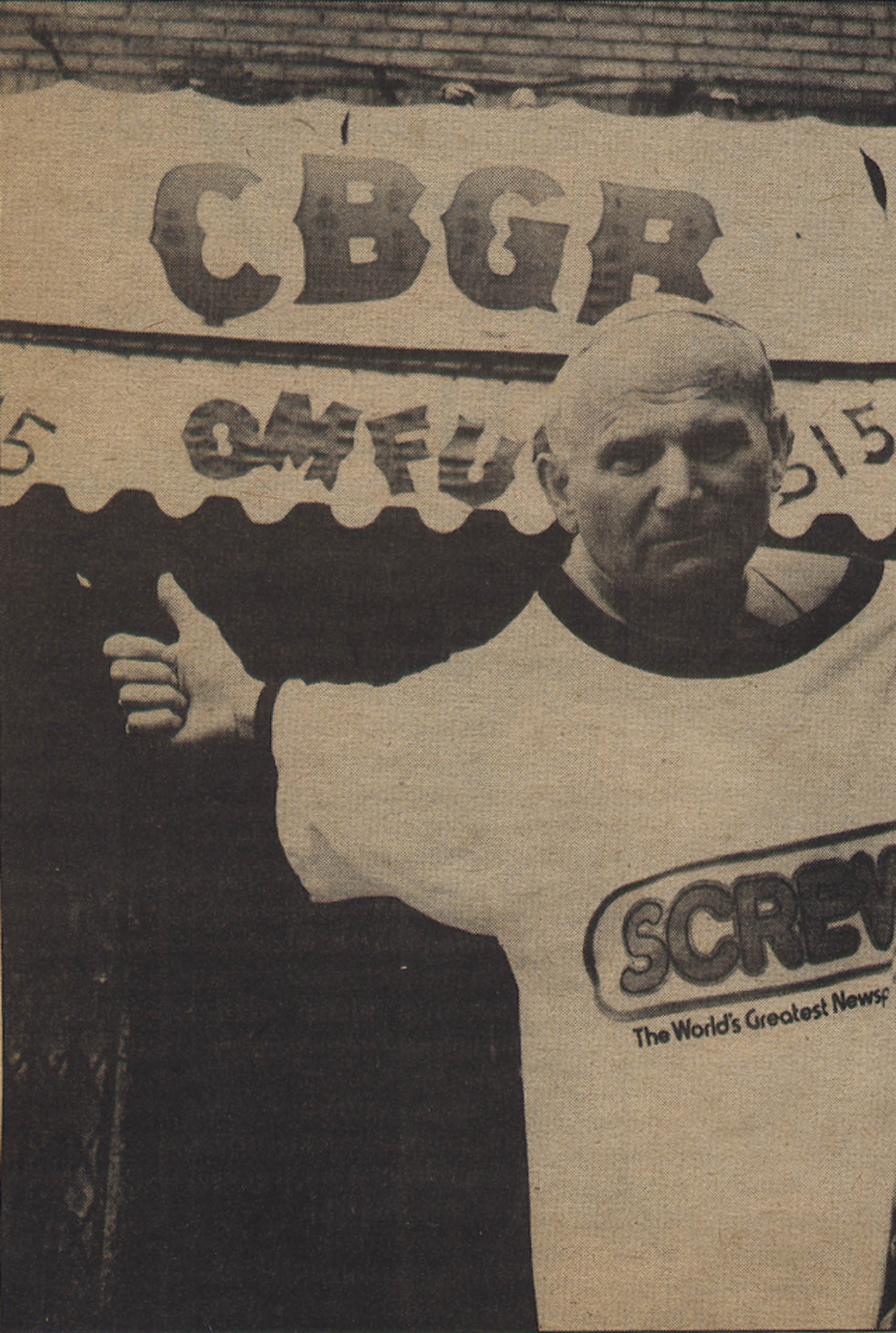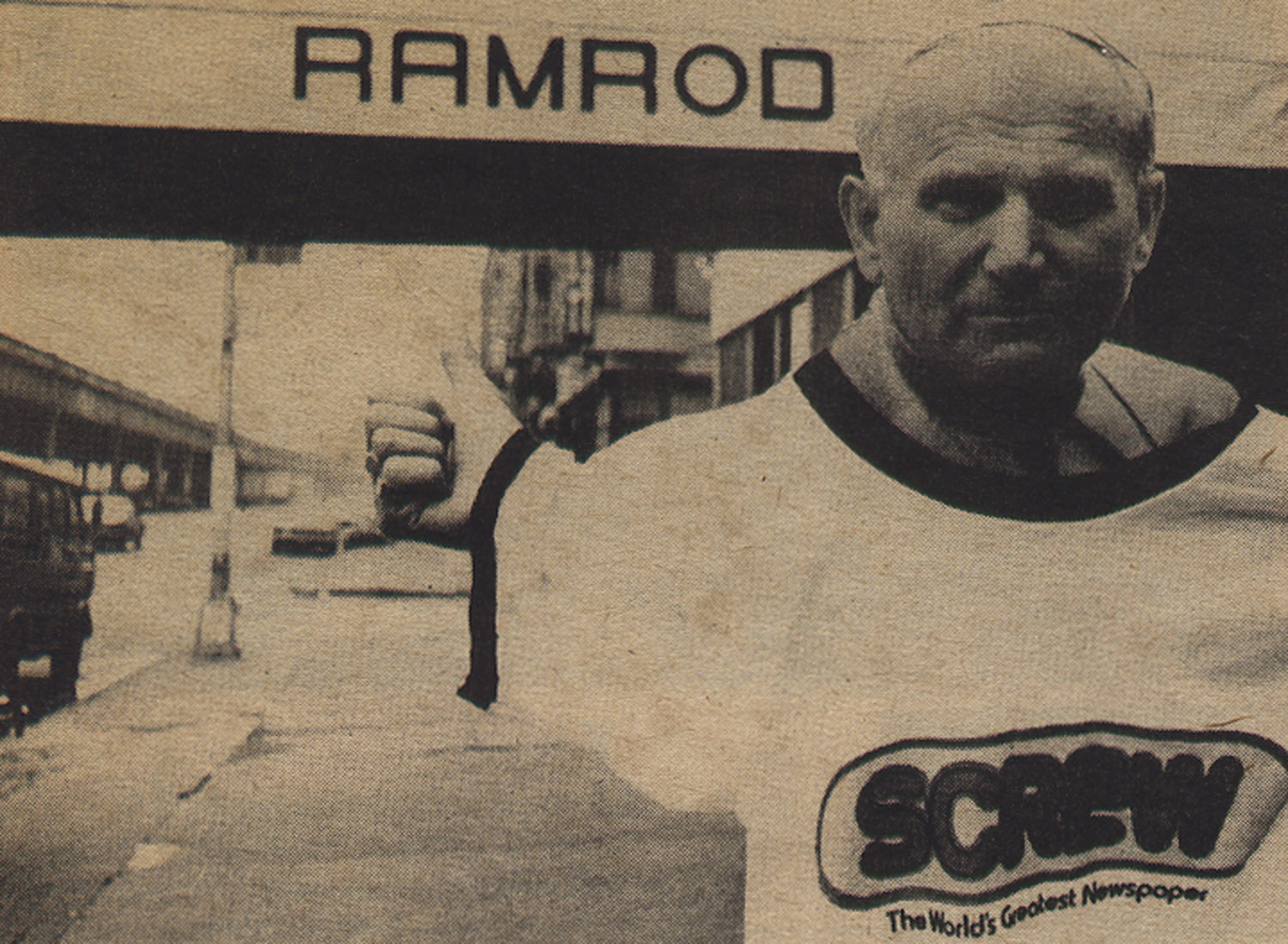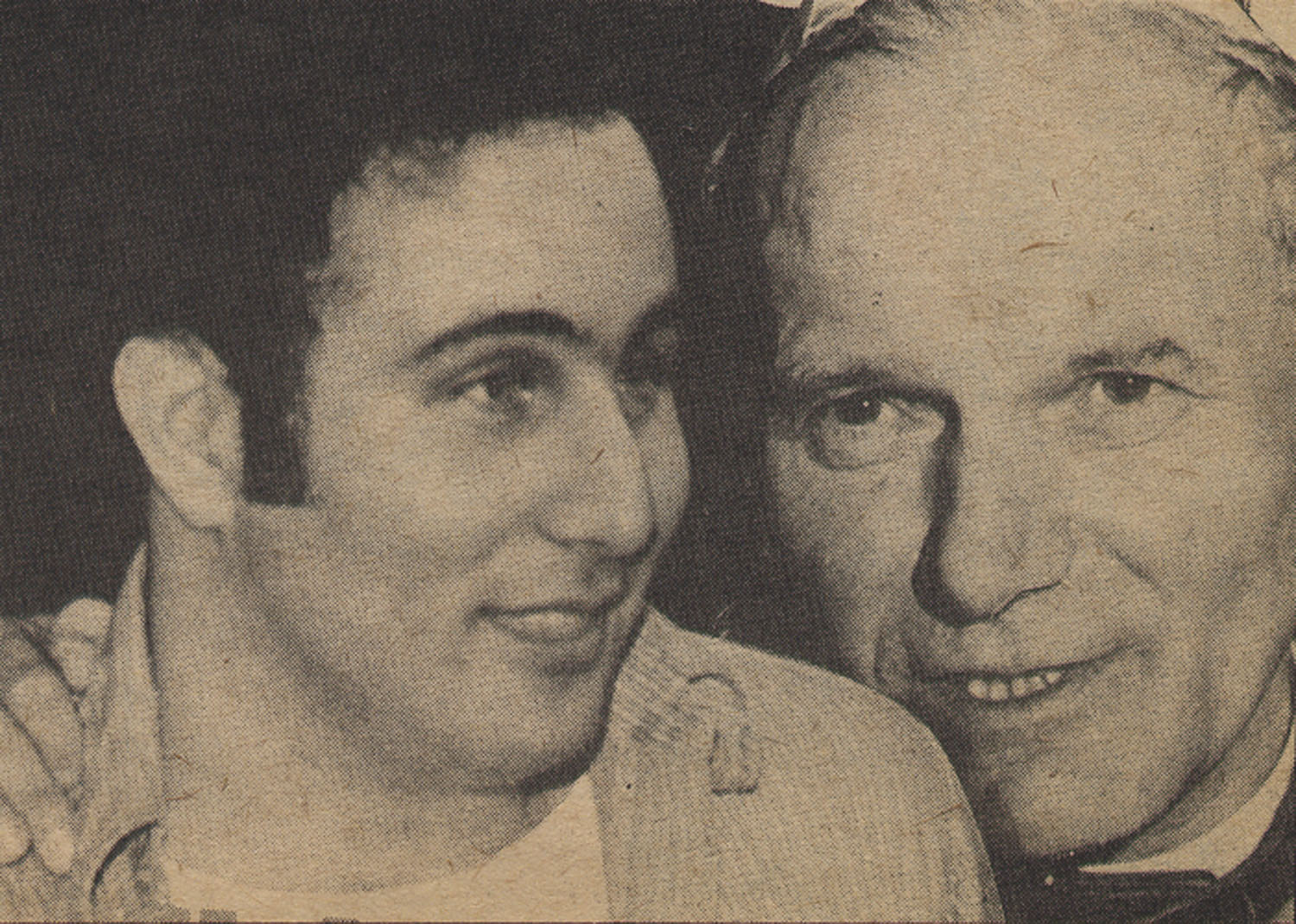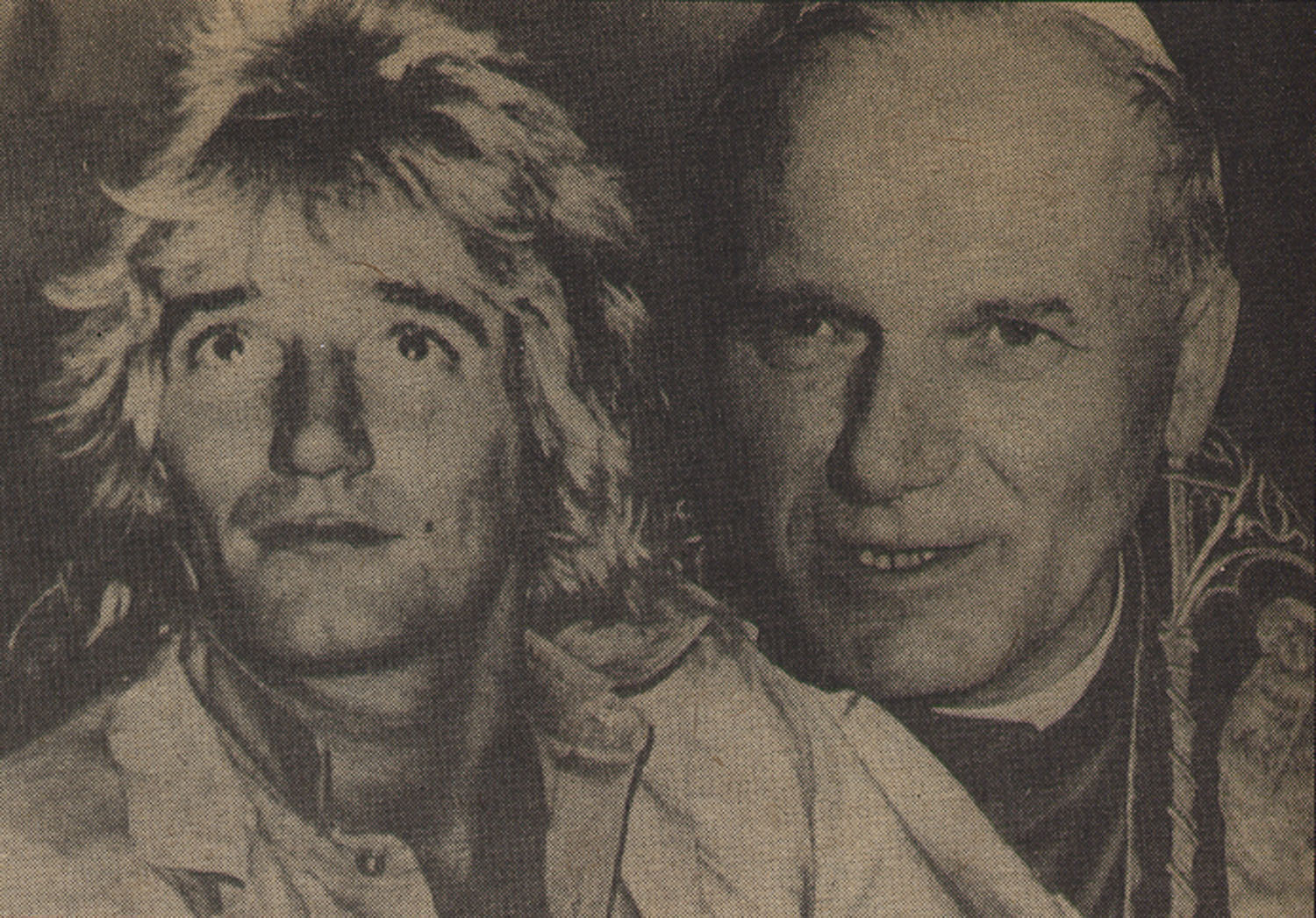Curt & Al Goldstein: Oil on Canvas
Marc H Miller, Bettie Ringma & Curt Hoppe
Al Goldstein with Curt Hoppe (photograph used for the painting)
The painting "Curt's Good Buddy Al Goldstein" would take the Miller Ringma Hoppe team to new artistic heights with a well attended performance at a Soho gallery starring New York's controversial peddler of smut. Goldstein published Screw, a cheaply produced sex paper often criticized for its extreme crassness and lack of taste but also admired for its humor and creativity. Curt chose Goldstein to be the subject of his "Paparazzi Self-Portrait" because he had long admired the publisher's openness about sex and his intolerance of hypocrisy.
When we approached Al to see if he would participate, we found he was not only willing but eager. Together we hatched an ambitious plan that concluded with the live event at the Robert Freidus Gallery where the painting was signed and members of the audience got their own photographs with Goldstein. Every step of the process was videotaped by Paul Tschinkel. While Curt’s admiration of Al was undoubtedly sincere, he also had another reason for involving the publisher. "Just watch," Curt predicted, "when this is over Al will offer me a job." Sure enough, as the performance came to an end and Al headed towards the elevator, he turned to Curt and asked if he wanted to paint centerfolds for Screw. Curt enthusiastically accepted!
Marc, Bettie and Curt posing with the painting of Curt and Al Goldstein.
Gallery performance - Robert Freidus Gallery
Curt works for screw 1979-81
Curt Hoppe, ‘Diddler on the Roof’ (Al Goldstein), Screw, December 28, 1981
I will always associate Curt's work for Screw with our "Paparazzi Self- Portraits." It was the portrait of Curt with Al Goldstein that got Curt the job at Screw; and many of his first illustrations for the paper were inspired by the way we had used famous people and unlikely juxtapositions in the "Paparazzi Self-Portrait" series. Our pictures, however, recorded actual moments and were always polite if not admiring; Curt's Screw centerfolds in contrast were contrived, painted pastiches that deliberately aimed to offend. The prolific Curt quickly established himself as one of Screw’s leading artists, taking his place alongside Robert Crumb, Vaughn Bode, Kim Deitch and others underground cartoonists from the 1960s who had also done worked for Al. Curt's provocative, humorous and topical illustrations always soared above their commercial context. They were in truth inspired examples of "Punk Art," and as such they were exhibited in "New York / New Wave," an important 1981 exhibition at the trendy art space PS 1.
The Eleanor Roosevelt Queer Three-Dollar Bill, Screw Magazine
Curt Hoppe, The Queer Three Dollar Bill (Eleanor Roosevelt), airbrush and collage on illustration board (for Screw centerfold), 1980
“Miracle on 42nd Street” - Screw, October 8, 1979


